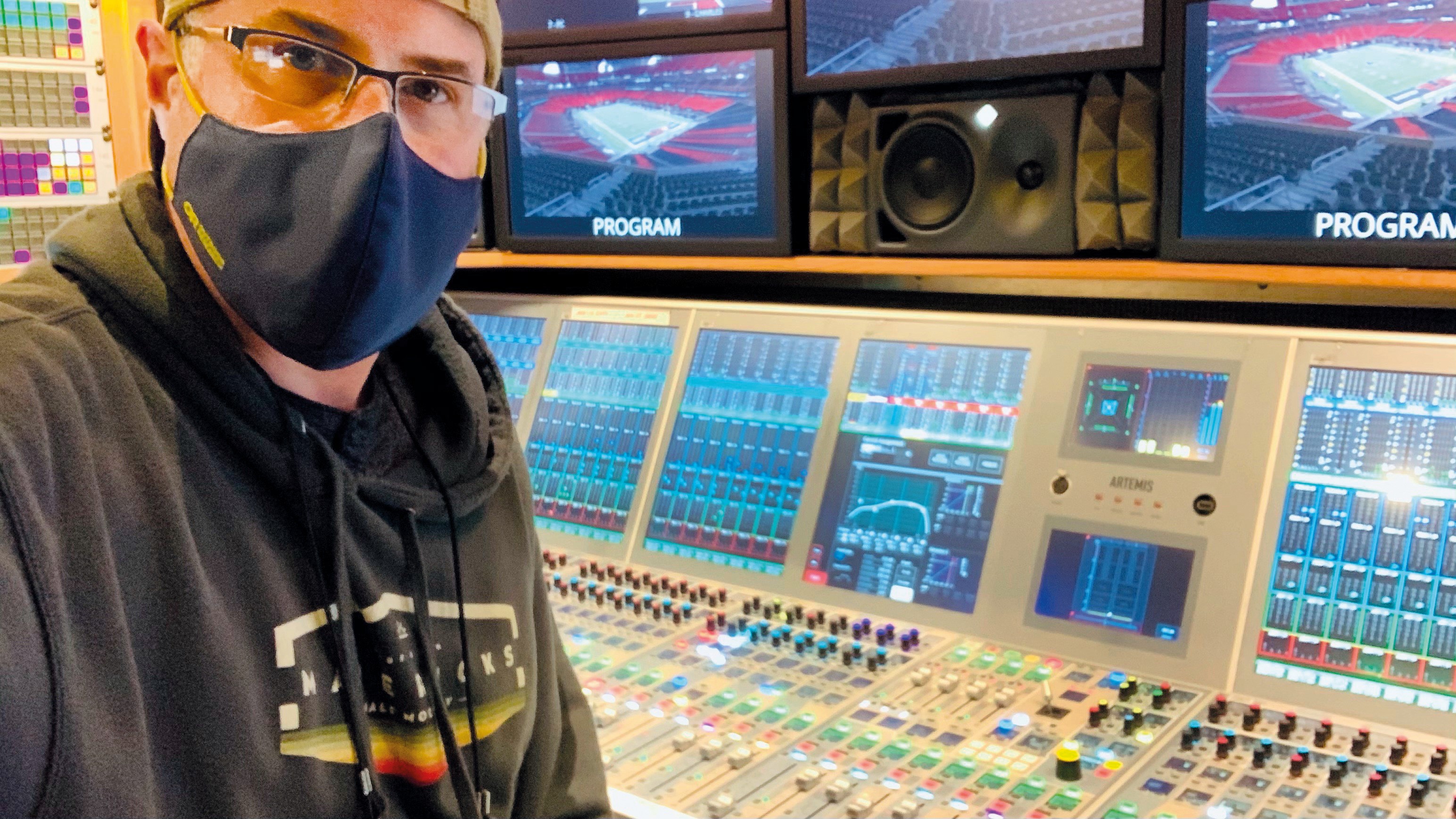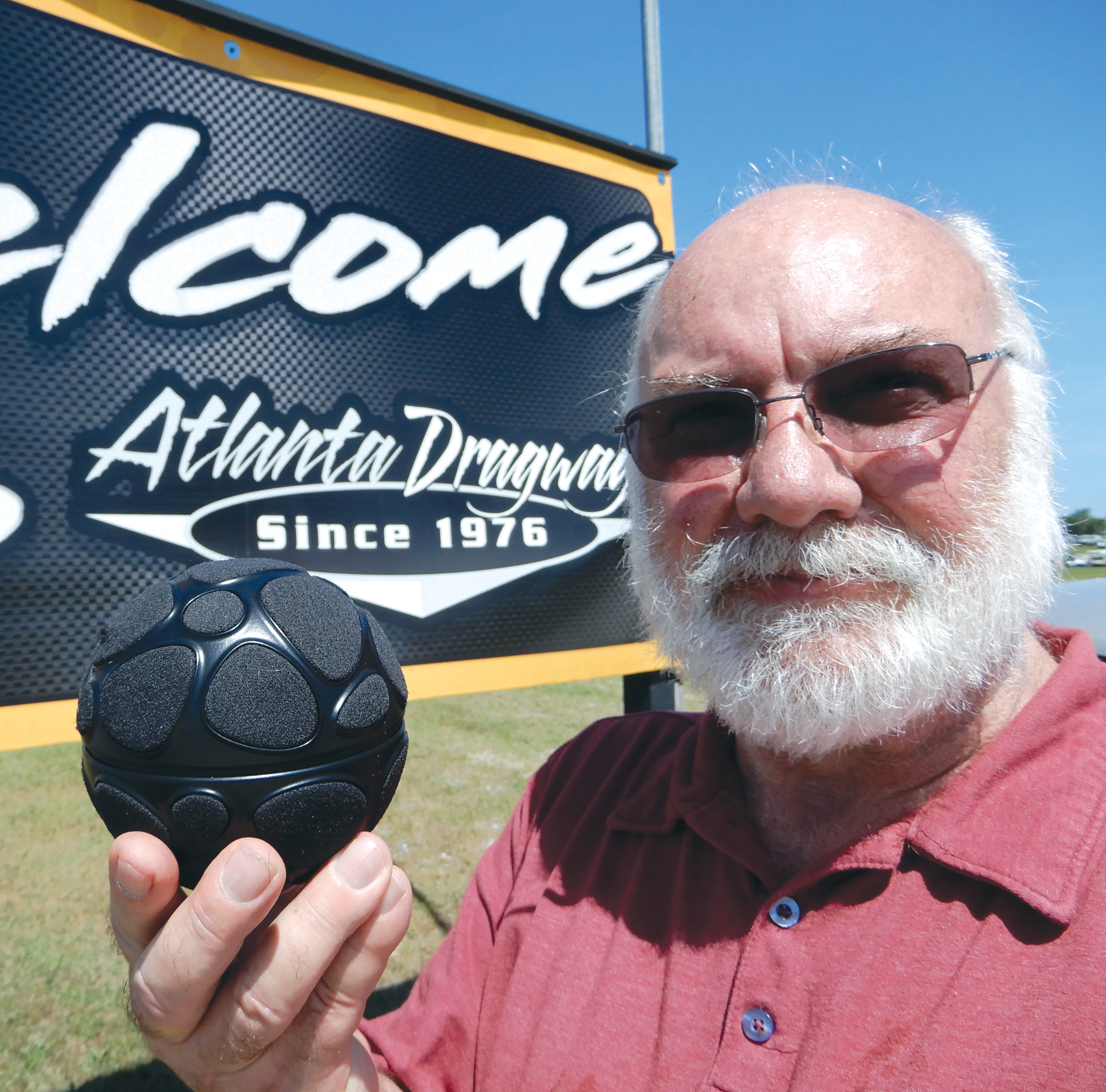Audio 2020: Good, Bad and New Reality
Dennis Baxter’s assessment of what 2020 has meant to the audio industry

Who would have thought that we would end 2020 with accelerated entertainment and sports schedules, athletes, judges, contestants and TV crews wearing masks—along with virtually no audiences or spectators in venues? Here’s my assessment of what the past year has meant to our industry:
THE GOOD
I really don’t mind empty seats with close shots of the athletes to disguise the fact there are few fans, but I do mind goofy cutouts that cover empty seats. My favorite shot of the baseball season was from the 2020 MLB World Series that Joe Carpenter mixed for Fox Sports. Not only did Carpenter have the biggest parabolic microphone I have ever seen behind home plate, but he had a total of three parabolic microphones: not just directly from behind home plate, but also one on the left and one on the right of home plate. Carpenter not only obstructed the prime viewing area of fans that were not there, but he delivered an engaging sound for the TV audience.
This was the season when audio proved to the many video skeptics the true importance of sound. It’s not that audio is 10% of the show and 90% of the problems; and it is certainly not that audio just follows video. When the sound of the fans and spectators are gone it seems the show really suffers.
As a retired road mixer, I fully understand that home time for many weary broadcast engineers, technicians, camera operators and the audio crew is often not enough. As my wife told me over 30 years ago, “You have it made. You don’t cook, clean or participate in the family.”
What an eye opener—I am still married to a very patient woman.
THE REALLY GOOD
It also seems that many audio professionals have spent some time expanding their audio chops. I have heard from and read about many “audio-ettes” who are spending some education time getting Audinate/Dante Certification and expanding their intercom and mixing desk skills.
More home and education time is a huge benefit to the crews, but for the last four to ve months, I have listened to baseball, basketball, hockey and football and truly believe that it sounds better with fewer people in the venues and sampled sounds.
The professional video industry's #1 source for news, trends and product and tech information. Sign up below.
One of the first times I tried synchronous playback was of pad crunches when I mixed a University of Georgia football game. How can you compete against close to 100,000 exuberant (mostly drunk) fans? The games I have listened to this season with perhaps up to 10,000 fans are dynamic, detailed and interesting for the home listener because you can hear the field along with a nice balance of the fans.
Clearly, the MLB World Series and most basketball coverage took the sound to a different level with alternative microphone placement and practices. For example, using the contact microphone under the floor could certainly lead to interesting Audio Tech Emmy nominations for the 2020 season.
THE BAD
It is hard to understand the lifestyle of the thousands of broadcast technicians in our industry. For the lucky number who can work out of a major sports city, a sport like baseball means 82 home games, which means employment for a large hometown crew (30 to 40 people) for 82 days.
With COVID-19, much of that income was gone for a shortened season. A regular home season for baseball and basketball is a luxury, but there are thousands more who travel to cover sports on a contract for weeks and months at a time, committed to cover college and professional football, basketball, golf, tennis, NASCAR and much more.
I heard from some of my freelance friends who experienced COVID-19 cancellations after being booked before the season had even started or was subsequently postponed, and I was told that many of the major sports networks paid freelancers for missed work—for awhile. The broadcast crew needs to have live sports competitions in order to earn a living.
With COVID-19, much of that income was gone, but hopefully, only for a period of time.
THE NEW REALITY
What do drones, cameras and microphones have in common? They can all be controlled remotely. Is that bad or another significant paradigm shift? The pandemic accelerated a process that had already begun—remote production. I honestly am surprised that it had not happened sooner. For example, the latency gap is something that Dave Maza of NBC Sports has worked at since before the 2000 Sydney Olympics. Clearly, this season of sports broadcast has proven that remote operation works.
Since the beginning of the pandemic, executive management has seen fewer people in the control rooms and on-site in general, providing ample proof and months of experience that crewing and staffing can be changed. Workow and operator interfaces have been tested and proven and there has been improvement and refinement in all areas of remote operation.
Additionally, there is a broad interpretation of what the term “broadcast quality” has come to be defined along with an abundance of less expensive digital equipment that helps achieve amazing quality for marginal costs. I am astonished at what I have seen on the major networks and often surprised at the quality of many streaming productions. Quality production is only getting better and cheaper.
There is obviously a symbiotic relationship between all the skills that contribute to an Emmy Award-winning production, but job skills and content production have shifted as capture and production have become simplified and decentralized. From the directors, producers, commentators, camera operators, sound mixer, audio assist, stats, spotters and on and on, I advise you to keep one simple thing in mind as you look ahead to 2021... it’s all about entertainment.
Dennis Baxter has spent over 35 years in live broadcasting contributing to hundreds of live events including sound design for nine Olympic Games. He has earned multiple Emmy Awards and is the author of “A Practical Guide to Television Sound Engineering,” published in both English and Chinese. He is currently working on a book about immersive sound practices and production.
He can be reached at dbaxter@dennisbaxtersound.com or at www.dennisbaxtersound.com.
Dennis Baxter has spent over 35 years in live broadcasting contributing to hundreds of live events including sound design for nine Olympic Games. He has earned multiple Emmy Awards and is the author of “A Practical Guide to Television Sound Engineering,” published in both English and Chinese. His current book about immersive sound practices and production will be available in 2022. He can be reached at dbaxter@dennisbaxtersound.com or at www.dennisbaxtersound.com.

